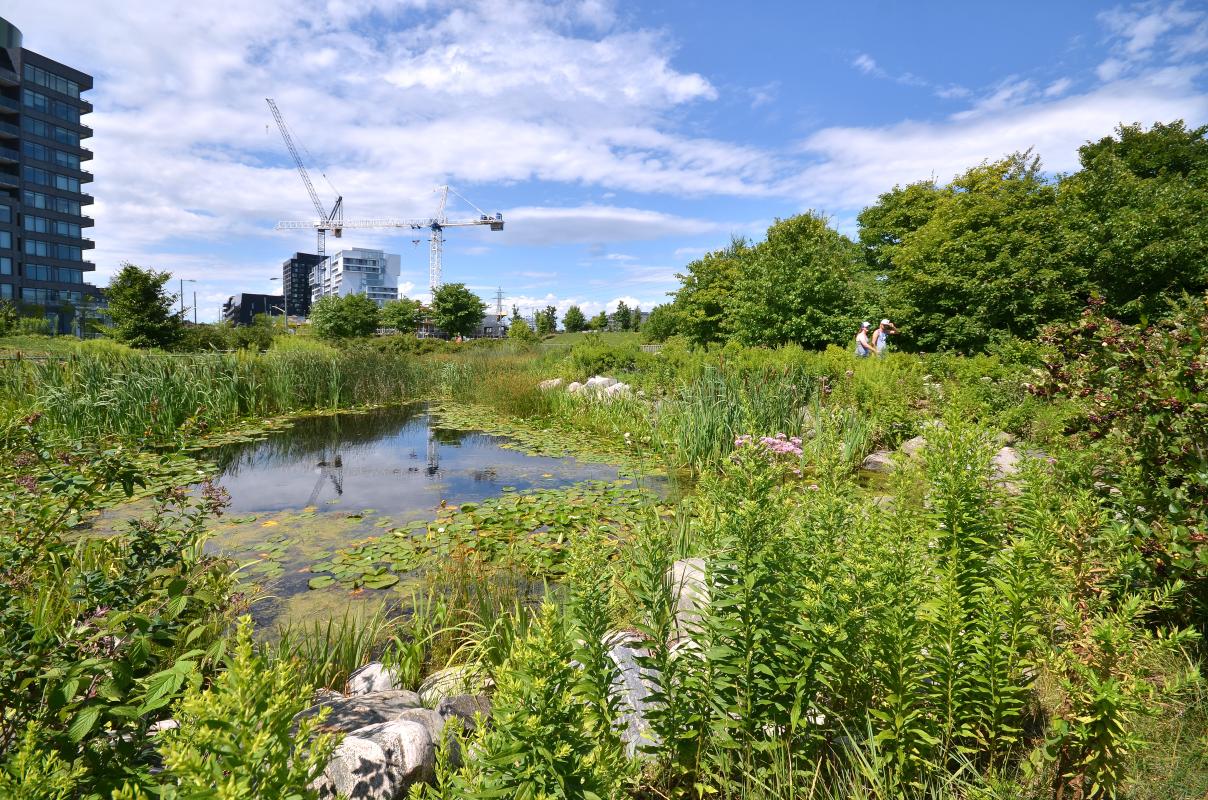Building Resilience - Looking Back at 2019-20
COVID-19 has underscored the fact that parks, like Corktown Common pictured here, are vital resources in big cities.
By: Kaleigh Wisman
2020 is a powerful reminder that our decisions in calmer times – the investments we make, the relationships we build – shape our ability to weather a crisis. In our 2019-20 Integrated Annual Report, we look back at how our work over the past year has contributed to a resilient waterfront. Following are some of the highlights.
Green space and healthy communities
Healthy communities and thoughtful urban design go hand in hand. Great public places invite people to be active, connect with neighbours and explore the city. Integrated affordable housing supports diverse, welcoming neighbourhoods that promote economic inclusion. And public art and cultural programs help to enhance daily life all year round and express distinct neighbourhood character.
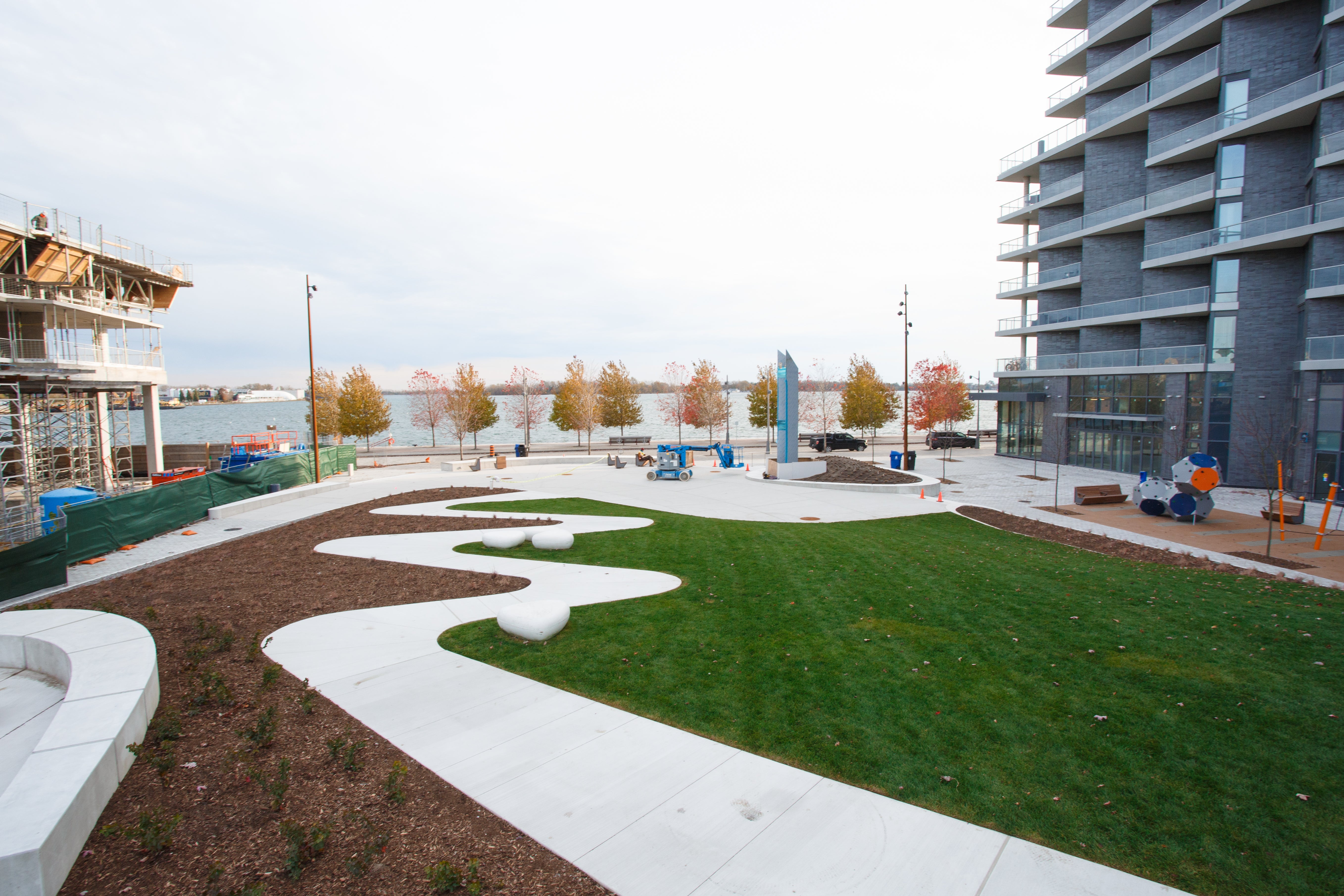 Aitken Place Park opened in the fall of 2019.
Aitken Place Park opened in the fall of 2019.
Green space has never felt more important than it does now. This past year, we were proud to introduce a brand new park — Aitken Place Park in East Bayfront — the latest among more than 25 parks we’ve added or improved on the waterfront over the years. As a multi-functional green space, Aitken Place Park includes a children’s play area, a central grassy knoll for outdoor lounging as well as public art piece, LIGHT KEEPER.
This lakeside park is a welcome addition to the emerging community of Bayside, which has expanded over the past year, including the introduction of new affordable housing. The Artscape Bayside Lofts welcomed residents to 80 new affordable housing units—all designated for artists and their families. With this addition, we have delivered nearly 600 affordable housing units on the waterfront to date with many more to come.
 J. Adam and Syreeta moved into the Artscape Bayside Lofts this past year. In this video, they share what it is like to be part of the emerging Bayside community.
J. Adam and Syreeta moved into the Artscape Bayside Lofts this past year. In this video, they share what it is like to be part of the emerging Bayside community.
In addition to green space and housing, another important ingredient for a healthy community is creating space for culture and art to thrive. Last year, as part of our temporary public art program, we sponsored the first Toronto Biennial of Art by providing the Biennial’s flagship space. The Biennial of Art, a free contemporary visual arts event featuring both Canadian and international artists, attracted nearly 300,000 visitors to the waterfront.
Innovation and Job Creation
Waterfront Toronto was created not only to revitalize the waterfront, but to make it a “gateway to the new Canada”— a place that leads the way on technology and sustainable design and catalyzes future-proof jobs. That vision is steadily coming to life.
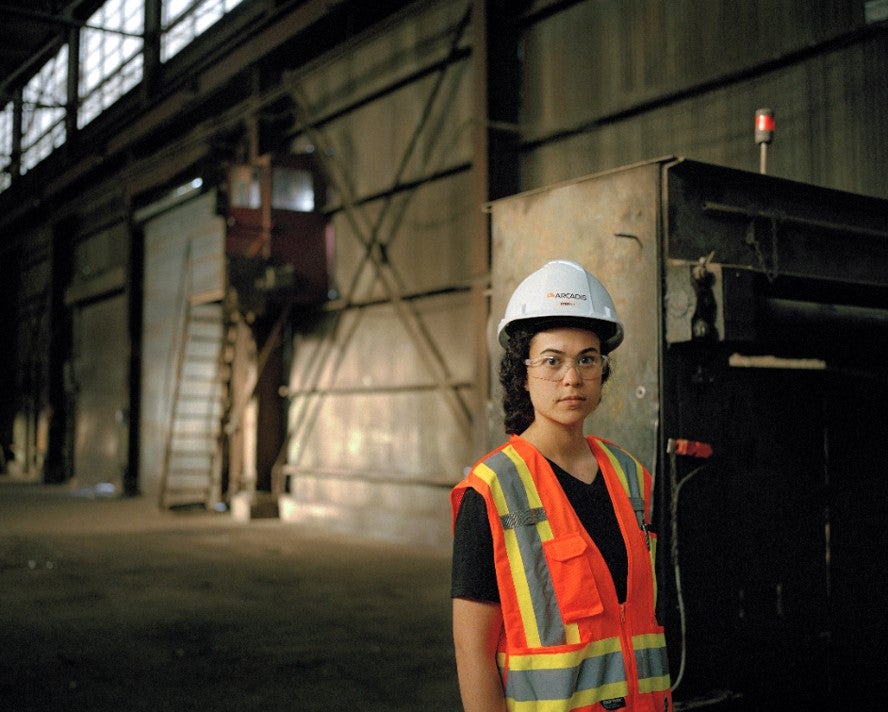 A worker on the Port Lands Flood Protection Project as photographed by Vid Ingelevics and Ryan Walker.
A worker on the Port Lands Flood Protection Project as photographed by Vid Ingelevics and Ryan Walker.
As we revitalize the waterfront, we create jobs. This past year, investments in revitalization delivered more than 2,000 years of direct full-time employment. In addition to this, thousands more high-quality, permanent jobs now exist in new neighbourhoods by the lake, as a dynamic and self-sustaining economy on the waterfront continues to take shape.
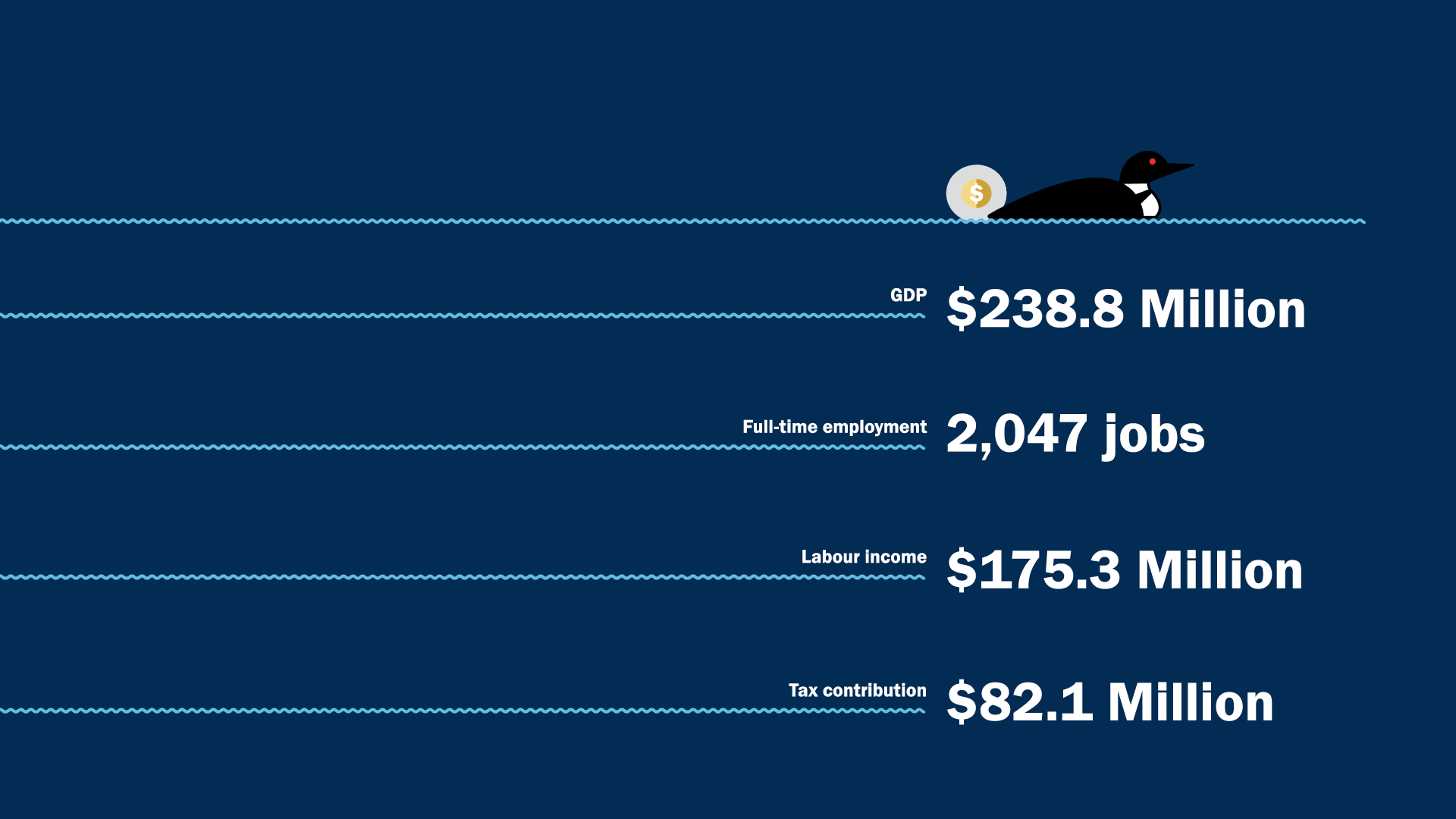 In 2019-20, investments made by Waterfront Toronto had substantial economic impacts. Roughly three-quarters of our total direct impact can be attributed to the Port Lands Flood Protection Project.
In 2019-20, investments made by Waterfront Toronto had substantial economic impacts. Roughly three-quarters of our total direct impact can be attributed to the Port Lands Flood Protection Project.
To date, waterfront neighbourhoods have attracted more than $10 billion in private sector investment. In 2019-20, private firms invested $3.2 billion in residences and workplaces in growing communities along the lake. Contributing to the health of the Canadian economy has always been a key element in the revitalization of the waterfront, and in these challenging times the economic impact of our efforts takes on even more importance as we recover from the effects of the global pandemic.
Climate Leadership and Sustainable Design
Every choice we make for the public realm — and every agreement we enter into with development partners — is carefully designed to minimize climate impacts, increase resilience and realize outstanding environmental performance
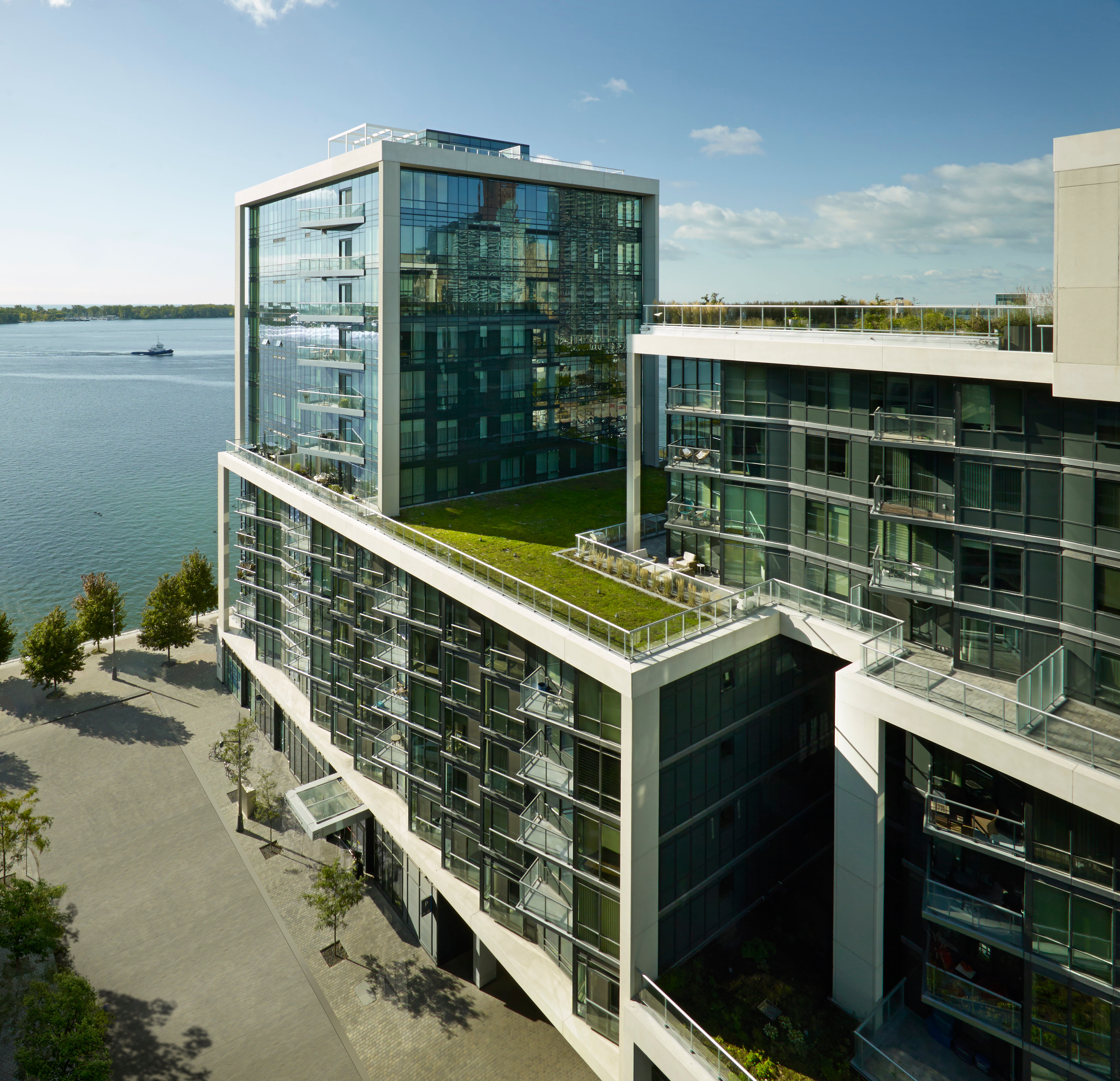 This past year, Aqualina in Bayside became Toronto’s first-ever LEED Platinum certified residential building.
This past year, Aqualina in Bayside became Toronto’s first-ever LEED Platinum certified residential building.
The Port Lands Flood Protection Project is a game changer when it comes to creating a resilient waterfront. When complete, the Port Lands Flood Protection Project will make it safe to revitalize 240 hectares of mostly post-industrial land, making new communities dramatically more resilient to extreme weather impacts. This past year, we completed the Chery Street Lakefilling portion of this project, creating new wetlands, aquatic habitat and natural coastline features.
Another highlight from the past year is the work on the Cherry Street Stormwater Management Facility, which will manage combined runoff from the West Don Lands and East Bayfront. To be completed by the end of 2020, this stormwater management system will help respond to growing number of extreme weather events caused by our changing climate and alleviate the pressure on our current sewer system.
Informed by leading insights on sustainability and resilience, our work on the waterfront is setting the stage for what is possible in other areas of our city and around the globe. 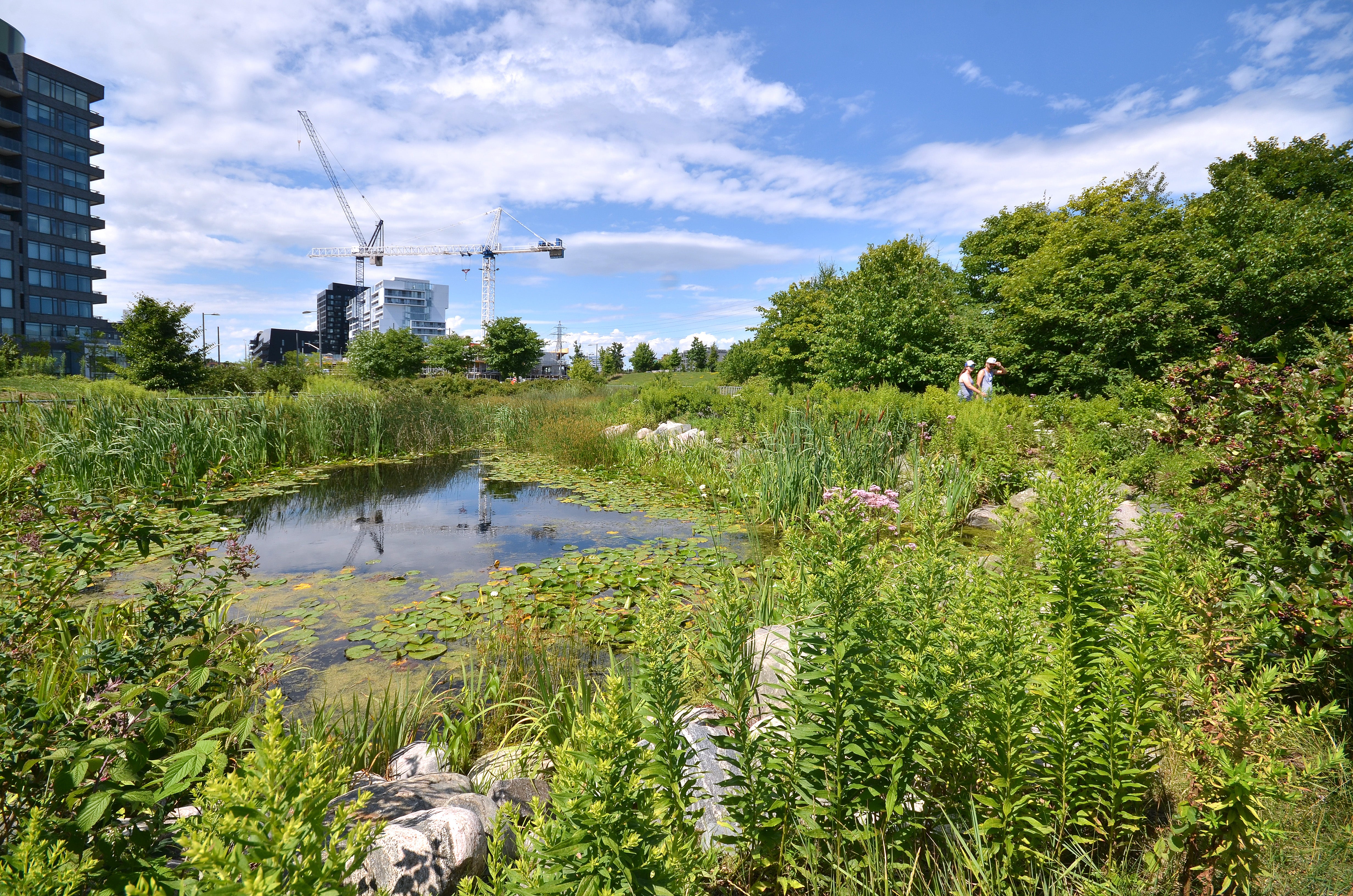
Resilience helps us in good times and bad
While we may not have control over the challenges our communities face now and in the future, we do have the ability to prepare for these challenges. In fact, creating communities that can weather crises — be it climate change or a global pandemic — will make us stronger and more prosperous during calmer times. Here’s to another year of realizing a resilient waterfront and a resilient Toronto!

